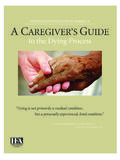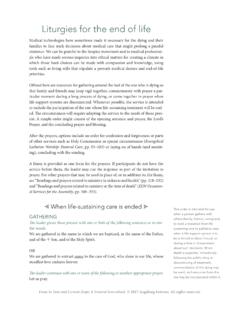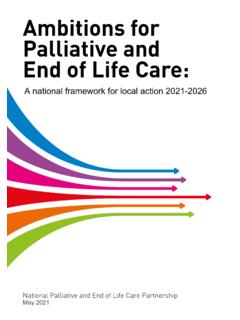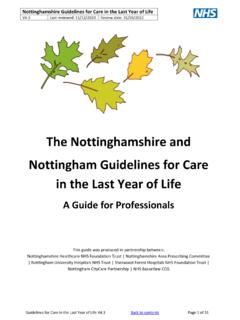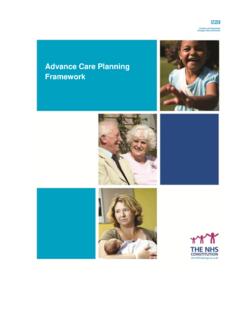Transcription of Understanding Hospice: Getting the Answers
1 hospice care is a special kind of medical and supportive care that focuses on symptom management and emotional support when a patient is expected to live six months or less. In hospice , the focus of care is not only the patient, but the entire family. Most hospice care involves active participation in daily caregiving by a family member or friend, supported by an interdisciplinary team of hospice professionals. For most patients, hospice care is covered through the Medicare hospice Benefit or other health insurance plan. This document provides Answers to the Knowledge of hospice quiz, which is located on the hospice Foundation of America website: This quiz is based on Medicare guidelines for hospice : Getting the Answers Photo credit: Julie Turkewitz, 201223 Understanding hospice : Getting the Answers :1.
2 hospice staff are available by phone any time, day or night. (TRUE) Families can depend on 24/7 assistance and advice by phone. When a crisis or concern arises while receiving care, hospice should be your first call. If a crisis cannot be handled over the phone, it is common for a nurse to make an in-person patient ) hospice must stop services if an individual lives longer than 6 months. (FALSE) Care can be extended past 6 months if a person s health continues to get worse or the physician believes he or she still has 6 months or less to live. Under Medicare guidelines, hospices are required to stop care if the patient s condition improves beyond a brief or temporary period so that life expectancy is now greater than six months.
3 Hospices refer to this as a discharge. The hospice Medicare Benefit, which pays for the vast majority of hospice , does not ) hospice care is available only to individuals with cancer. (FALSE) The majority of patients have conditions other than cancer. hospice serves those with other life-threatening illnesses including heart and lung disease, dementia, kidney failure, and many other ) hospice services are typically paid for by health insurance. (TRUE) hospice is covered by nearly all insurance plans, including Medicare and Individuals and families typically do not pay out of pocket for hospice services.
4 However, there are some limits to what is covered by hospice . For example, nutritional supplements, disposable supplies ( , bed pads), nursing home room and board, and over-the-counter medications unrelated to the patient s primary illness are not typically covered. 5.) hospice provides grief support for families. (TRUE) Hospices are required to offer bereavement services to the grieving family for at least a year after a loved-one dies. Grief support may be offered in a variety of formats: one-on-one counseling, group sessions, or periodic phone calls. Many hospices also offer grief support to the general public, regardless of whether hospice was involved in caring for the person who died.
5 6.) hospice care can be provided in a nursing home. (TRUE) Patients can get hospice care in a variety of residential settings, including nursing homes, assisted living communities, or private ) hospice care is only appropriate for people who have a few days to live. (FALSE) After experiencing the quality and comfort that hospice provides, a majority of individuals and families state that they wish they had started receiving hospice care earlier in the course of the illness. hospice care tends to be most beneficial when families receive the full range of skilled medical, emotional and spiritual support services for at least a month or ) While in hospice , spouses, partners or children of the dying individual are not allowed to directly participate in his or her care.
6 (FALSE) hospice provides education and assistance to family caregivers. hospice works to support the entire family and support system, by partnering with them to improve their ability to cope with the stress involved in providing care. In many cases, family members provide much of day-to-day patient care. hospice nurses, social workers and other team members provide education and support to the family caregivers. Photo credit: Julie Turkewitz, 2014459.) hospice care helps the dying individual by speeding up the dying process . (FALSE) hospice providers do not speed up the dying process , nor can they or other medical professionals cure terminal illnesses.
7 Some studies suggest hospice care may actually extend life. hospice tries to maximize patient quality of life for the remainder of his/her life by addressing pain and symptoms. hospice can also offer opportunities to do important things such as attend a wedding, graduation, church service, or other significant ) hospice care cannot be provided at home. (FALSE) The majority of hospice care (66%) is provided in the A smaller, but growing, percentage of hospice patients receive care outside of the home for example, in a nursing home community, hospital, or hospice ) Only individuals over age 65 are eligible for hospice services.
8 (FALSE) Anyone expected to live 6 months or less can receive hospice care, regardless of ) Anyone can make a referral to hospice . (TRUE) A patient, family member, friend or doctor can contact a hospice to ask about whether hospice care would be appropriate. After a conversation and assessment of the condition, the patient s doctor and hospice professionals (in consultation with the patient) will determine whether the individual could benefit from hospice ) hospice provides medications, treatments, medical equipment and supplies that are related to the patient s primary illness.
9 (TRUE) Hospices vary, but they should provide medication, treatments, medical equipment and supplies associated with the patient s terminal illness. Families should be aware of the exceptions, as they may need to pay out of pocket for these items. 14.) hospice services end when the hospice patient dies. (FALSE) Grief support is available for the surviving family members up to a year after the patient s death. Social workers are available to assist families in navigating services after the patient dies such as connecting the family with bereavement resources or providing information about survivor ) hospice care is available to any individual expected to live 6 months or less.
10 (TRUE) Individuals can remain in hospice care for longer than 6 months. However, their health status must be reviewed on a regular basis by the hospice team to determine whether they are still eligible for services. Hospices may be required to end services if, after observing patients for a few months, they seem to have stabilized, or show signs of continued improvement. 16.) People who live alone are able to receive hospice services. (TRUE) A majority of hospices (over 80%) will enroll patients who do not have a Those living alone may need a caregiver at some point, but adaptations can usually be made so that the patient does not have to relocate.
